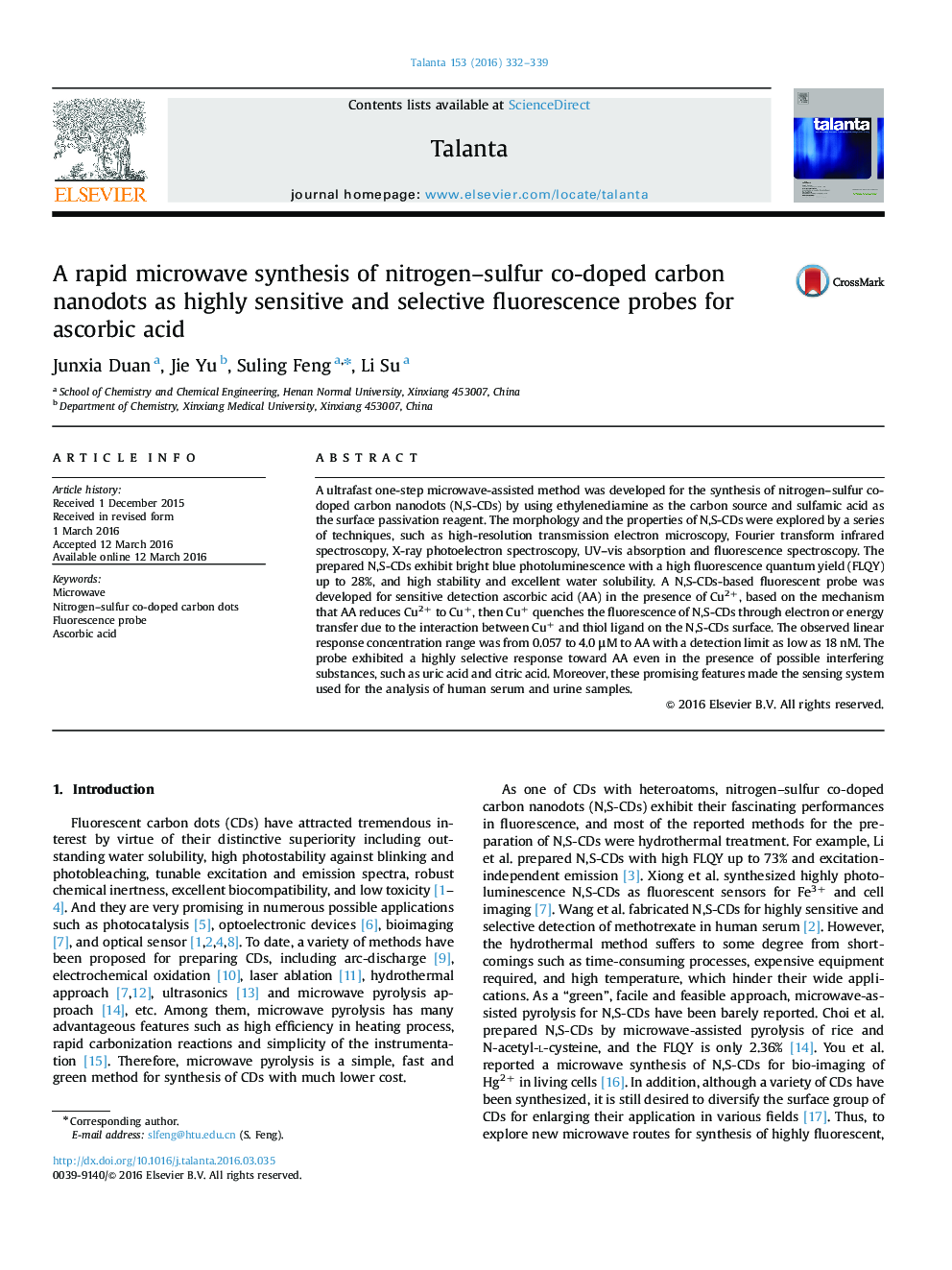| کد مقاله | کد نشریه | سال انتشار | مقاله انگلیسی | نسخه تمام متن |
|---|---|---|---|---|
| 1242591 | 1495782 | 2016 | 8 صفحه PDF | دانلود رایگان |
• Highly fluorescent nitrogen–sulfur co-doped carbon nanodots (N,S-CDs) were synthesized under microwave radiation.
• N,S-CDs with Cu2+ exhibit highly selective response towards ascorbic acid.
• N,S-CDs quenching of ascorbic acid in the presence of Cu2+ was discussed.
• The detection limit of the proposed method was 18 nM for ascorbic acid.
• The present strategy can be applied successfully to determine ascorbic acid in biological fluids.
A ultrafast one-step microwave-assisted method was developed for the synthesis of nitrogen–sulfur co-doped carbon nanodots (N,S-CDs) by using ethylenediamine as the carbon source and sulfamic acid as the surface passivation reagent. The morphology and the properties of N,S-CDs were explored by a series of techniques, such as high-resolution transmission electron microscopy, Fourier transform infrared spectroscopy, X-ray photoelectron spectroscopy, UV–vis absorption and fluorescence spectroscopy. The prepared N,S-CDs exhibit bright blue photoluminescence with a high fluorescence quantum yield (FLQY) up to 28%, and high stability and excellent water solubility. A N,S-CDs-based fluorescent probe was developed for sensitive detection ascorbic acid (AA) in the presence of Cu2+, based on the mechanism that AA reduces Cu2+ to Cu+, then Cu+ quenches the fluorescence of N,S-CDs through electron or energy transfer due to the interaction between Cu+ and thiol ligand on the N,S-CDs surface. The observed linear response concentration range was from 0.057 to 4.0 μM to AA with a detection limit as low as 18 nM. The probe exhibited a highly selective response toward AA even in the presence of possible interfering substances, such as uric acid and citric acid. Moreover, these promising features made the sensing system used for the analysis of human serum and urine samples.
Figure optionsDownload as PowerPoint slide
Journal: Talanta - Volume 153, 1 June 2016, Pages 332–339
